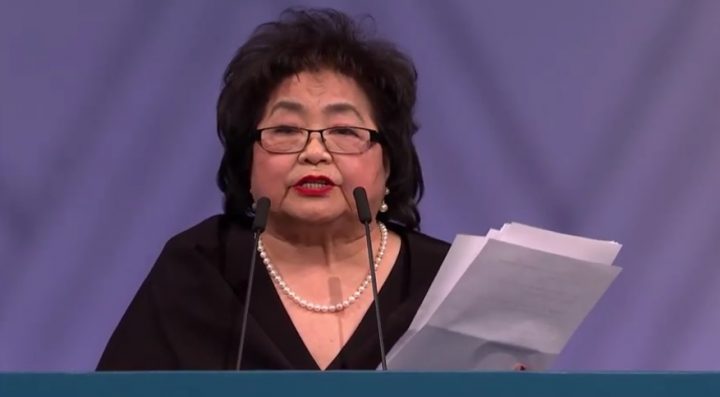By Carlos Umaña.
75 years ago the world changed forever. On August 6, 1945, an atomic bomb was detonated over the Japanese city of Hiroshima and then on August 9 another one was detonated over Nagasaki.
Approximately 210,000 people died after the detonation and another 200,000 in subsequent years from the effects of the bomb. Several other cities had suffered great devastation and even more deaths from bombing by allied forces, so the Japanese authorities were not immediately aware of the magnitude of the effects of this new technology.
The survivors of the Pikadon (pika: flash, don: rumble) thought the worst was over and did not imagine that their suffering had only just begun. Initially, when apparently healthy people became covered with black spots, quickly became ill and died, it was thought that it was a contagious disease. Even years later, when the disease was already called “radiation” and several children had been born with severe deformities, and many had been afflicted with various types of cancer, little was understood about it. The news about the mysterious illness of the people of Hiroshima and Nagasaki did not take long to spread, and a stigma was created against the now-called Hibakusha. In the rest of Japan they would be discriminated against for several years and even generations; their compatriots would not hire them because they might get sick, nor would they marry them because they might bear deformed children.
In her powerful and heart-breaking testimony, Setsuko Thurlow recounts the anguish of the survivors and how the authorities conspired to keep the world from learning of the humanitarian consequences of these bombings. They could not allow the human drama to complicate the doctrine of nuclear deterrence and raise questions about US nuclear hegemony.
The current risk
Today, even though we are no longer in the bipolar world of the Cold War, the risk of nuclear detonation is higher than ever. The Bulletin of Atomic Scientists’ Doomsday Clock marks 100 seconds to midnight, the highest risk in history. This is mainly due to three factors: the inflammatory rhetoric of the heads of nuclear states; climate change itself, which is capable of generating and fuelling local and regional conflicts; and the growing risk of accidental detonation.
We know that in the case of the US nuclear arsenal alone there have been more than a thousand accidents, and that on six occasions we have been on the verge of nuclear war. Of the 13,500 nuclear warheads in the world today, some 1,800 are on high alert, targeting cities, ready to be detonated in minutes. Such systems are increasingly vulnerable to cyber-attacks, technological and human error, to the point where the Future of Life Institute has determined that nuclear warfare is most likely to be accidental. In other words, if we are alive today, it is not because of good management of these weapons, but by mere luck.
Now, nuclear weapons are not practical weapons. They are not meant for military targets, but to kill and injure many, many civilians. It is impossible to control their effects and to use them would be a suicidal act. Why do they really exist? In simple terms: to scare. Their usefulness is based solely on the semantic charge behind the words “nuclear power” and “nuclear deterrence”, on equating destructive force with power and prestige. Their main value, then, is the symbol they represent, a symbol which, until recently, had the backing of virtually the entire international community.
The Ban
It is through prohibition that all other weapons of mass destruction – chemical, biological, landmines and cluster munitions – have been abolished. In all these cases, an international norm and a climate of moral condemnation were created that put an end to their use, production and sale. On 7 July 2017 at the UN, 122 countries, a clear majority of the international community, voted to adopt the Treaty on the Prohibition of Nuclear Weapons (TPNW). This treaty is the result of a new way of doing international politics, in which non-nuclear states take the reins of nuclear disarmament; a hopeful process that in 2015 Costa Rica referred to as the democratization of nuclear disarmament.
Today, with COVID-19, everyone is aware of the vulnerability of our global system; however, the current pandemic is far from being an existential threat. The effects of a nuclear war, even a small-scale one, would be far worse. Nuclear disarmament requires the deconstruction of the symbol of power around these weapons, and this paradigm shift – which we are already on track to achieve – will materialize through a global movement. It is in our hands to prevent this catastrophe and to prevent the suffering of the Hibakusha from becoming a global reality. Today, power and prestige are associated less and less with destructive power, impositions and threats, and more and more with the ability to consult, to create dialogue and to build bridges. Now is the time to make a commitment to peace. Our existence depends on it.






